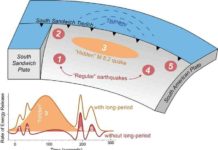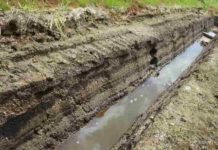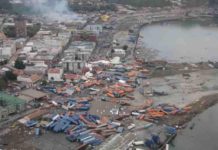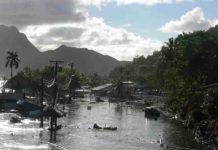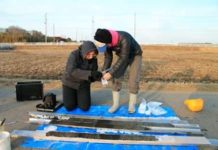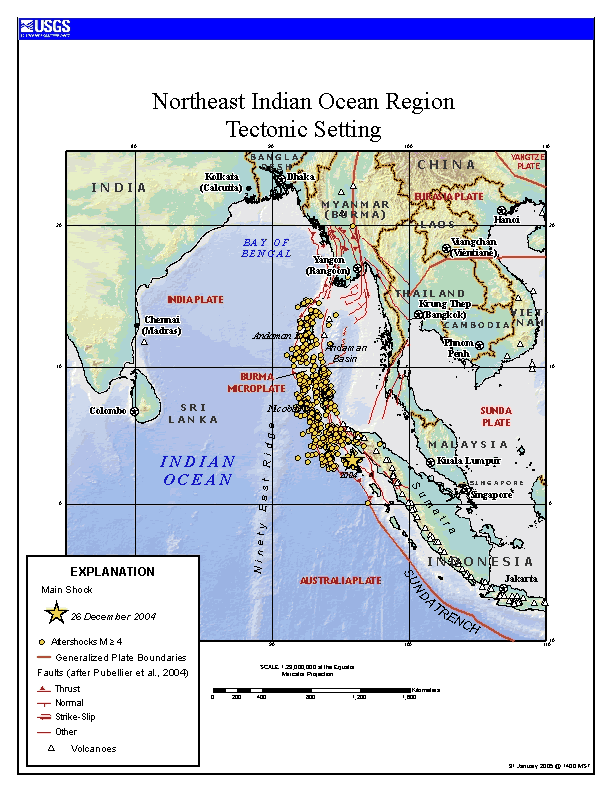
In the early hours of Dec. 26, 2004, one of the world’s most powerful earthquakes triggered one of the largest tsunamis in 40 years.
Sometimes known as the Christmas or Boxing Day tsunami, the December 26, 2004 Indian Ocean Tsunami is far from a distant memory, a decade after resulting in more than 200,000 casualities.
“The tsunami struck after the magnitude 9.1 Sumatra-Andaman Earthquake occurred off the northwest coast of Sumatra, Indonesia, causing catastrophic levels of destruction to countries around the Indian Ocean basin.”
Cause and Areas Impacted
The magnitude 9.1 Sumatra-Andaman Earthquake occurred on the interface between the India and Burma tectonic plates.
According to USGS scientists, the sea floor near the earthquake was uplifted several meters. The displacement of water above the sea floor triggered the tsunami, which caused catastrophic levels of destruction in countries around the Indian Ocean basin, reaching as far as the east coast of Africa.
The tsunami arrived in northern Sumatra approximately 30 minutes after the earthquake, in Thailand approximately an hour and a half to two hours after the earthquake, and in Sri Lanka approximately two to three hours after the earthquake.
The tsunami was only recently rivaled by the 2011 tsunami in Japan.
“The foremost impact, of course, is the loss of life in both cases,” said Eric Geist, USGS research geophysicist. “For the 2004 tsunami, the loss of life far outweighed damage to infrastructure, whereas for the 2011 tsunami, there was significant damage to infrastructure in Japan.”
Countries hardest hit by the 2004 tsunami included Sri Lanka, India, Thailand, Somalia, Maldives, Malaysia, Myanmar, Tanzania, Bangladesh and Kenya
Tsunami Research
The 2004 tsunami was the deadliest and one of the most destructive in recorded history.
Tsunami runup heights of more than 30 meters were observed along the west coast of Sumatra.
In Aceh and Sumatera Utara Provinces, Indonesia, at least 108,100 people were killed, 127,700 are missing and presumed dead and 426,800 were displaced by the earthquake and tsunami.
Bruce Richmond, a coastal geologist with the USGS Pacific Coastal and Marine Science Center in Santa Cruz, Calif,, along with USGS scientists Bruce Jaffe and Guy Gelfenbaum joined international survey teams to documenttsunami impacts, collect water level information, and map erosion and deposition of sediments to characterize the sedimentary record. The tsunami effects were studied in an effort to develop techniques to improve the identification of paleotsunami deposits in the geologic record.
“Our studies were conducted in a variety of coastal environments impacted by the tsunami and went a long way in helping us to understand the variability of deposits from a single event in multiple coastal settings,” Richmond said.
Future Implications and Preparation
Before the Indian Ocean Tsunami occurred, USGS geologists had been assessing tsunami hazards in California, seeking evidence of past tsunami deposits along California’s shores. “Not long after we started our California work in 2004, the Indian Ocean earthquake and tsunami struck which changed the focus of our efforts for several years,” said Richmond. “At the time, that tsunami was the largest natural disaster in our lifetimes, both in terms of lives lost and widespread impact. Our observations on many different shorelines around the Indian Ocean went a long way in helping us to understand the variability of deposits from a single event in multiple coastal settings.”
Geist, too, said he and his USGS counterparts’ research since then has focused on taking the lessons learned from the 2004 and 2011 tsunamis and applying them to hazard issues that affect the U.S. Could it happen here?
“Initially, my research focus was evaluating the performance of hazard assessment models if they had been used prior to the tsunami,” Geist said. “Since then, our research has focused more on taking the lessons learned from both tsunamis and applying them to hazard issues that affect the U.S.”
Bruce Jaffe, research oceanographer, said that earthquakes and tsunamis like those in 2004 have brought awareness and the need to study and prepare for these often underestimated hazards
“The take-home message is that we still have a lot to learn about what the real hazard of tsunamis are,” he said. “We’re getting there but it’s taking time.”
Note : The above story is based on materials provided by U.S. Geological Survey .






